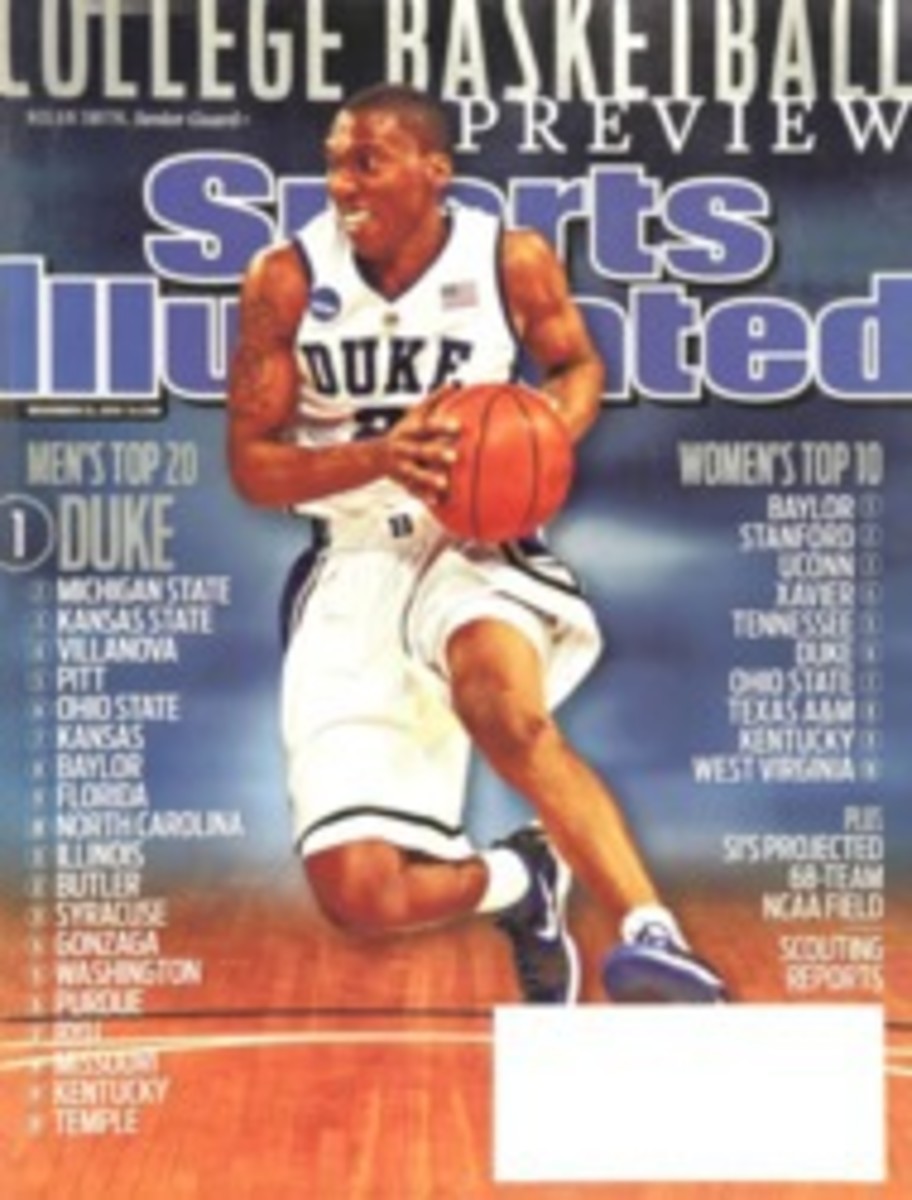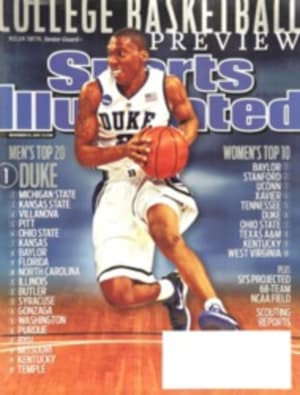
PARITY IN THE NFL THE BIG DIFFERENCE
In a 2010 season devoid of a dominant team, the Lombardi Trophy is up for grabs, and a well-drilled, well-coached and supremely cohesive unit like the Jets' offensive line could determine the champion
The members of the Mushroom Society meet each spring in Cincinnati, lugging overnight bags and obscure documents dedicated to the study of run-blocking and pass protection. Among the participants in the annual clinic for offensive line coaches—Mushrooms, they call themselves, for their ability to flourish under grimy conditions, in the shadows—is the Jets' Bill Callahan, former coach of the Raiders and of Nebraska and now the brains behind the most dominant offensive line in the NFL.
On Sunday, about 250 miles north of Mushroom headquarters, Callahan huddled with his troops on the sideline at Cleveland Browns Stadium, deep into an overtime that had tested them in every way. They had won the ball-control battle. They had sprung New York running backs for timely gains. They had protected second-year quarterback Mark Sanchez. With 24 seconds left Callahan's line stood firm one last time, and Sanchez, releasing quickly, found wideout Santonio Holmes on a quick slant that turned into a 37-yard touchdown and a 26--20 victory. Said right tackle Damien Woody, "We were dead tired. It felt like playing two games in one. But Coach Callahan told us we were going to win the game right here, and I was just hoping and praying he was right."
The play set off a celebration worthy of the weeklong buildup. Coach Rex Ryan lit cigars with New York general manager Mike Tannenbaum outside the stadium, sending ribbons of smoke into the dark sky, a reward for beating Rex's predecessor, Browns coach Eric Mangini, and his twin brother, Cleveland defensive coordinator Rob Ryan, whom Rex had playfully mocked during a midweek press conference by donning a blond wig and an XXXXXL Browns sweatshirt. Callahan and his linemen? After the game they walked to the buses silent as monks, their duty for the week done. "They work more than they yap," Jets defensive end Trevor Pryce says of the O-line. "You can't get a word out of them. They beat you up, they score, and they walk off the field."
The Jets' offensive line may prove to be the decisive unit in a wide-open race for the Super Bowl title. Powerful in the running game and precise in the face of pressure, its brilliant play has become a staple in a league lacking a clear bully. Three years after the Patriots' perfect regular season, and one year after the Saints and the Colts both flirted with the same, the season's last unbeaten team, the Chiefs, fell quietly in Week 5, highlighting a season of parity and unpredictability.
The elite teams that ruled the last decade have returned to the pack. The Steelers started out swimming strongly against the current of their quarterback's own misdeeds but have dropped two of their last three games. The Patriots are transitioning on defense from a veteran group to a young, feisty and, occasionally, error-prone one. The Colts have had to break in a raft of new skill players, and their defense has been beset by injury.
Not that every franchise has taken advantage of the buckling giants. The 49ers and the Texans are perpetually intriguing and dependably disappointing. The Chargers are bungling their special teams play during the season instead of waiting for the playoffs. The Vikings and the Cowboys, two NFC powers that entered September with Super Bowl aspirations, have been embroiled in soap operas.
Still, the logjam of mediocrity gives almost every team hope for a late-season playoff dash. As Browns running back Peyton Hillis said last week, framing Cleveland's rise in terms its fan base will appreciate, "Every dog has its day."
At 7--2 the Jets have weaknesses like every team—Sanchez's occasional impetuousness, cornerback Darrelle Revis's balky hamstring, placekicker Nick Folk's fickle foot—but the offensive line will not be the place to look for softness. The unit is a mix of tough, intelligent players, a group that has remained largely intact. That continuity breeds comfort and a propensity for recognizing and neutralizing the schemes they see from week to week.
"You're essentially outnumbered every snap," Callahan says. "The defense is always going to bring one more than you have. Finding solutions to those problems becomes critical, so it's important to have smart guys who can see them."
What New York has is a sturdy foundation:
• Woody, 6'3" and 327 pounds, the rare tackle who began his career as a center (a first-round pick of the Patriots in 1999) and had the knowledge and quick feet to move outside as he got older. "I call him Twinkletoes," says backup tackle Wayne Hunter.
• Right guard Brandon Moore, 6'3" and 305, undrafted out of Illinois in 2002. He's strong (a 600-pound bench press) and smart (an undergraduate degree in English).
• Center Nick Mangold, 6'4" and 307, a 2006 first-rounder out of Ohio State and two-time Pro Bowl pick whose spatial awareness allows him to quickly process and point out defensive tendencies.
• Left tackle D'Brickashaw Ferguson, 6'6" and 310, a 2006 first-rounder from Virginia who's so highly regarded by Sanchez that the quarterback brought him as his guest to a White House state dinner in May.
• Left guard Matt Slauson, 6'5" and 315, a 2009 sixth-round pick who played for Callahan at Nebraska and stepped into the starting job this year after veteran All-Pro Alan Faneca was cut in April. "There's definitely a lot of pressure there, taking over for Alan," says Slauson, at 23 the youngest of the starting five. "I have to make sure every week that there's no step-down at left guard."
The vets have not been gentle in breaking in Slauson. Last December, when he was a rookie, they made him host a dinner at Del Frisco's steakhouse in New York City. The bill reached five figures. "All I kept hearing from the guys all night was, 'This party sucks,'" Slauson remembers. "Then when I took Brandon Moore home, the toughest critic on the O-line, he says, 'Nice work, Slau. I had fun.'"
On the field the line's production is nearly equal to its output in 2009, when they led the league in rushing and ran all the way to the AFC Championship Game. Through Sunday they ranked third in rushing (150.7 yards per game), and the O-line has helped give Chargers castoff LaDainian Tomlinson new life at 31. "They allow me to get up on the safeties and get through that first wave of defenders," LT says. "It's something running backs cherish."
Says Ryan, "People say, 'Well, you have guys that are highly paid and a lot of Number 1 picks on the line.' That's not by accident. That's where the priority is. Keeping the quarterback upright, knocking holes in teams so you can run the football. That's what we have. It starts and ends right there."
Sanchez says the only negative about his talented linemen is the tab they run up at Del Frisco's. "It's not cheap," he says.
Callahan attended his first Mushroom Society meeting in the early 1990s, after hearing through the grapevine about an annual meeting of offensive line coaches. The clinics were started in 1983 by Jim McNally, who as the Bengals' O-line coach in the '80s helped mold one of the best units of its time.
What began as a gathering of about a dozen coaches (originally called COOL: Coaches of Offensive Lineman) grew into the hundreds and included coaches from colleges and high schools. "I was working with the Bengals, and a lot of coaches wanted to come to Cincinnati in the spring and talk football," McNally says of the inspiration for the club. "Soon enough so many coaches wanted to visit that we started doing it at a hotel."
Callahan, the line coach at Wisconsin from 1990 to '94, made the yearly pilgrimage. "It's a great way to bond and share information," Callahan says. "It's the only one of its kind in the country. There are always four or five NFL coaches speaking, and the prerequisite for it is to speak about what you're doing and show your drills and your film and show other coaches the techniques that you're trying to expose to your players. I've listened to coaches and taken ideas that they've presented and implemented them in my own teaching."
As a guest speaker this year Callahan gave a presentation on the 6/7 Hole Zone Play, a zone-blocking formation that's run in some form by nearly every NFL team. Other speakers on the 2010 agenda were Saints line coach Aaron Kromer discussing The G-Sprint-Outside Zone Play Versus Multiple Fronts, Alabama's Joe Pendry on Making Your Blocking System Simple with a Numbering System and Kansas State's Dana Dimel on The Wildcat Play.
Callahan's work with the Mushrooms doesn't end with the clinic. He speaks often before and after games with McNally, a Jets consultant. "If I have issues," Callahan says, "he's someone to talk to about the latest trends and techniques."
McNally appreciates Callahan's commitment. "I think he spends a little more time than the other guys," McNally says. "He's a meticulous workaholic. Some of the other coaches might say I'm tooting Callahan's horn, but I don't know where he gets the endurance. He has staying power where the average guy would want to sleep. He'll hold up one more card at practice, figure out one more angle against a defense. I tell him he's going to be burned out, but he keeps burning."
Says Ferguson, "Whatever method is necessary in helping you learn a technique—chalkboard talk, video, taking notes, by example, bringing somebody in—[Callahan's] open to trying it."
For many years Jason Taylor was a pass rusher in Miami trying to crack New York's code. Now, as a first-year Jet, he can say what he always felt back then: "We always thought they were the best line we played."
The Jets defeated the Browns on the Sanchez-Holmes overtime connection, but the groundwork was laid earlier in the second half, when New York went on drives of 19 plays in the third quarter (Folk missed a 24-yard field goal) and 13 plays in the fourth quarter (Folk made a 25-yarder) that gassed the shorthanded Cleveland D.
"There is nothing like beating a defense up," Woody says. "Long drives, converting third downs—that takes a toll. You see the signs. They put their hands on their hips, they're breathing hard, and that's when you know you have them. It's like a runaway locomotive. You just want to keep going."
It's a feeling Woody and his mates have experienced often, but Sunday's drawn-out tussle with the Browns broke new ground. "In my 12 years in the league, I've never been in a game like that," Woody said.
A perfect case study for the Mushrooms.
Now on SI.com
Peter King, Damon Hack, Jim Trotter and Don Banks cover the league at SI.com/nfl
"THEY WORK MORE THAN THEY YAP," PRYCE SAYS OF THE O-LINE. "THEY BEAT YOU UP AND WALK OFF THE FIELD."
PHOTO
Photograph by DAVID BERGMAN
MASSIVE ATTACK Weighing in at more than 1,500 pounds, the crew of (from left) Woody, Moore, Mangold, Robert Turner (subbing for Slauson on this drive) and Ferguson wore down the Browns' defense in Sunday's epic overtime win.
TWO PHOTOS
Photographs by DAVID BERGMAN
GETTIN' WIGGY Brad Smith (16) and Tomlinson (opposite page) went all out for their inimitable coach (below) in his showdown with his predecessor Mangini (left, tan pants) and brother Rob (beard).
PHOTO
JEFF ZELEVANSKY/ICON SMI (REX RYAN)
[See caption above]

